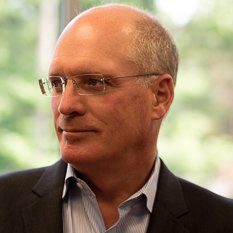
5 Questions with Nikki Marchan, MPH. Senior Specialist, Antimicrobial Resistance, Association of Public Health Laboratories
“5 Questions With…” is a weekly BioBuzz series where we reach out to interesting people in the BioHealth Capital Region to share a little about themselves, their work, and maybe something completely unrelated. This week it’s Medical Laboratory Professionals Week and we continue the series with Nikki Marchan, MPH. Senior Specialist, Antimicrobial Resistance, Association of Public Health Laboratories.
Nikki Marchan is public health professional who is passionate about progressing the study of infectious diseases for enhanced prevention, detection, and response. As a Senior Specialist with the Association of Public Health Laboratories, she provides support for laboratory and surveillance activities and works on behalf of and in collaboration with public health laboratories, federal partners, and other public health organizations. Her collaborative work with other public health professionals aids in tracking and preventing disease outbreaks worldwide. In her free time, she loves hiking, reading, and spending time with her husband and rescue dog.
1. Please introduce yourself to our audience with a look back at your education, training, and career.
I was drawn to STEM topics in high school, so I obtained my Bachelor of Science from the University of Maryland, College Park with a degree in Animal Science and a concentration on laboratory animal practice. From there I went on to work in a reproductive physiology and genetics laboratory for seven years. While I was very successful in the laboratory, my career aspirations kept turning to public health.
I had taken a few introductory courses during undergrad and was fascinated by the multitudes of interconnected fields within public health. This prompted me to return to school and get my Master of Public Health in epidemiology. I naturally gravitated towards epidemiology because it’s the study of the distribution and determinants of disease, which fits well with my STEM background. It was also during this time that I was able to spend time in one of the largest hospitals in Eswatini, the country with the highest prevalence of TB/HIV co-infection. This was a very important experience because it showed the real-life consequences of public health action; at the time I was in Eswatini, one-third of the entire population was under the age of 15 due to the high number of AIDS-related deaths.
Following my degree program, I officially started my career in public health. My program has a focus on antimicrobial resistance, which is a growing problem both domestically and globally.
2. Introduce the Association of Public Health Laboratories (APHL) for those who aren’t familiar with the organization.
The Association of Public Health Laboratories works to strengthen laboratory systems serving the public’s health in the US and globally. We are a non-profit member organization and our members consist of the state and local governmental health laboratories.
Public health laboratories (PHLs) monitor, detect and respond to public health threats; they are America’s first line of defense against a wide range of health threats. Those threats can include emerging infectious diseases, such as SARS-CoV-2 and Ebola, but also include foodborne outbreaks, environmental threats, and biosafety/biosecurity. Through testing and surveillance activities, PHLs form the backbone of a national laboratory network.
At APHL, we apply our expertise to strengthen PHL science and practice. We do this in a variety of ways; some are internal to PHLs, such as offering laboratory training and supporting the development of new technologies, while others have broader reaches, such as serving as a federal liaison and releasing publications. Regardless of the specific activity, our vision is a healthier world through quality laboratory systems.
3. Infectious Diseases and Enhanced Protection are passions of yours. What have you learned from the current pandemic that should be applied to future planning and preparation initiatives?
I, like most people within the field, have learned a lot in the last year. To call out a few important concepts that the pandemic highlighted:
More Interconnectedness. The pandemic created and strengthened professional relationships between organizations. There were so many upsides to this. Increased knowledge exchange, stronger messaging, and collaborative projects are just a few examples.
Infrastructure and Sustainability. It can be argued that public health has been chronically underfunded. While spending on personal healthcare increased dramatically over the last few decades, funding for public health activities did not (and, interestingly enough, the US performs suboptimally on a variety of health outcomes when compared to other countries). But funding is necessary to expand capacity to detect and respond to emerging and new threats. And any investments must be both strategic and sustained to allow scientists to prepare for new threats and create innovative solutions.
Improved Communication Strategies. Things were different pre-pandemic; most of the population never had to Google reverse transcriptase PCR, ct values, or whole-genome sequencing. The pandemic showed the need to have appropriate, timely, and consistent communication for different audiences.
4. You’ve been in the Maryland/DC/Virginia BioHealth Capital Region (BHCR) for much of your career. If someone who was considering coming here to work asked you “What is great about the BHCR?”, what would you tell them?
There are too many to list. From a professional lens, this area has an amazing concentration of STEM organizations. Washington DC also lends itself to the opportunity of (depending on the company) collaborating with federal partners, which has the possibility of being quite impactful.
From a family and social lens, this is a great area to live. It has both urban and suburban settings along with a fair amount of green space, great schools, and a vibrant cultural scene. And, for those who like to experience different settings, it is less than 2 hours away from national parks, beaches, coastal towns, and other large cities.
I would say a big sell for this area is the people themselves. It is a very diverse area, which means you are exposed to lots of different ideas, cultures, food, and celebrations. And people respect each other, even if they differ in their appearance or beliefs. That’s a big selling point.
5. Travel is opening up again, but many people still aren’t flying for vacations. Where is one place you’ve never been but would love to visit after the pandemic? And why?
The French Riveria. I was supposed to go there for my honeymoon in 2020 and still hope I can visit in the near future. For me, it’s a perfect blend of everything I imagine a memorable getaway with my significant other to be – history, renowned restaurants, picturesque countryside, beautiful beaches, scenic drives, cultural significance, romance, a tad bit of glamour, and the opportunity to bet it all on red in Monte Carlo (well, maybe not all).
Another place that we considered for our honeymoon and really want to visit is rural Japan. While we would spend a little time in the cities, the countryside is where the majority of the time would be spent. The incorporation of the natural and spiritual world into Japan’s culture and history is very fascinating. It would be a different type of vacation, one where we can slow down and appreciate the stillness, which is needed after 2020.
Thank you Nikki Marchan, MPH. Senior Specialist, Antimicrobial Resistance, Association of Public Health Laboratories for participating in the ‘5 Questions with BioBuzz’ series, and stay tuned for more interviews with others from across the BioHealth Capital Region and beyond.




